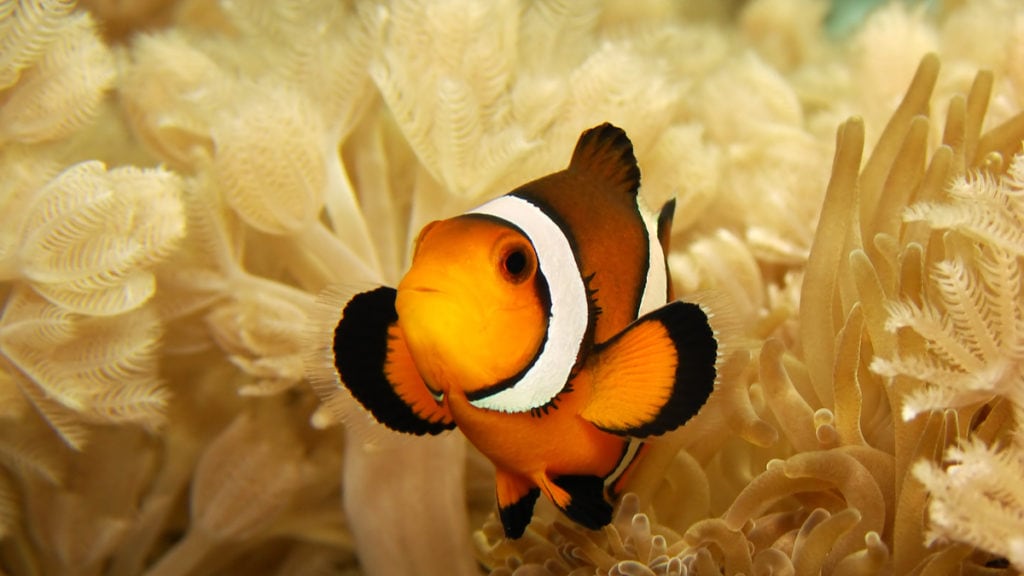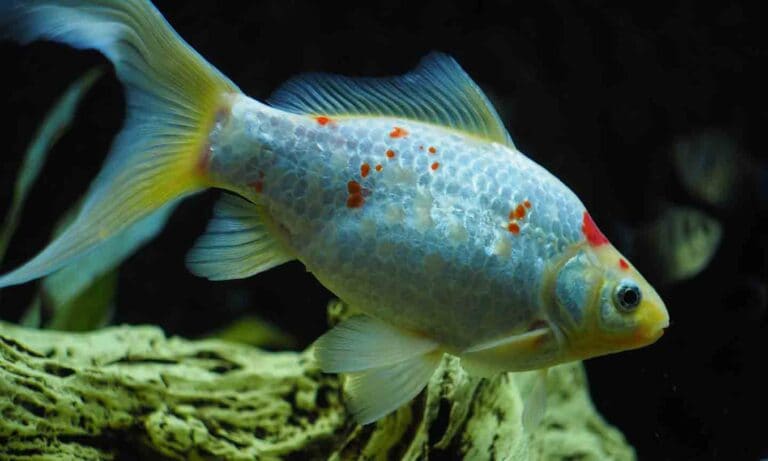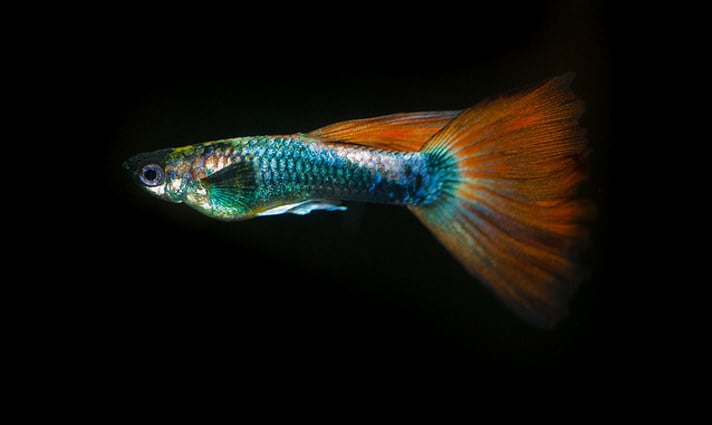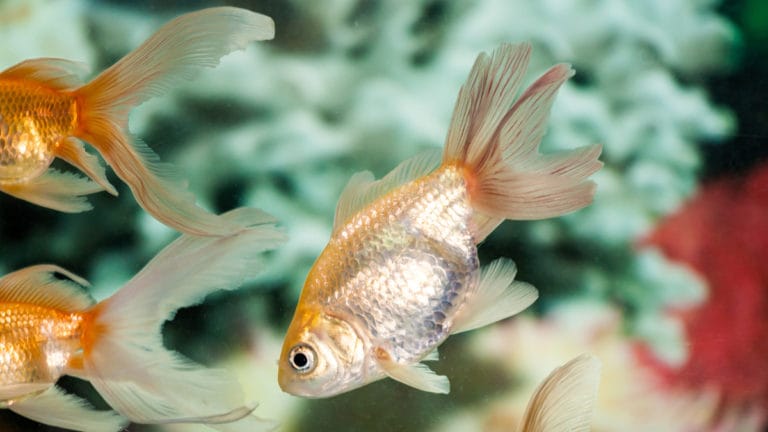One of the biggest obstacles to keeping marine fish in home fish aquariums is disease. Pathogen epidemics can and often do result in fish death if the aquarist does not deal with them promptly and appropriately. Disease-related fish fatalities are the top reason cited by hobbyists as to why they left or are leaving the marine aquarium hobby.
Marine fish not only deal with pathogens in aquaria, they regularly harbor internal and external parasites in the wild. In nature, however, parasites rarely overwhelm the immune system of the host and cause its demise. Fish parasites depend on the fish as a nutrient source (at least during certain stages of their life cycle), and it would be maladaptive for the parasite to kill its host. The problem in the aquarium is that parasite densities can become so high that the associated physical damage results in deadly bacterial infections and fatal physiological disturbances.
So how do we deal with these potent pathogens and increase our chances of success with our piscine companions? In this article, we’ll look at three common parasites that can turn a marine aquarist’s dream into a nightmare. I’ll discuss how to recognize these three pathogens and how to effectively treat them. Let’s start the survey with the most common parasite: ich.
Cryptocaryon (Marine White Spot Disease, Ich)
Ich is a saltwater fish plague (another parasite, Ichthyophthirius multifiliis, affects freshwater fish and is known as the freshwater form of ich) that most — if not all — marine aquarists deal with eventually. It is a ciliated protozoan that exhibits a three-stage life cycle. There is the tomite (infective) stage, a trophont (feeding) stage and a tomont (encysted) stage.
During the free-swimming stage, the parasite finds a suitable host and burrows into the gills and skin. Here the parasite transforms into the trophont stage, and begins to feed on the host’s cells and fluids. In severe cases, this can cause the host’s tissue to become inflamed and hemorrhagic. Trophonts feeding on the eyes can even cause blindness.
After the trophont matures, it falls off the fish and encysts. Cell division and maturation occur at this time. The cysts then break open, releasing tomites into the water to begin the cycle again. Each one of the tomonts can produce up to 200 nasty little free-swimming tomites.
The tomites actively look for a host for about 24 hours. Unfortunately, tomonts may not release their parasitic hoard for up to 72 days after falling off a host fish. That means you can take all the fish out an aquarium and still have ich in the aquarium a couple of months later.
The life cycle of this “beast” is highly temperature-dependent. The warmer the water, the faster the life cycle is completed (there is, of course, a minimum and maximum temperature where the parasite cannot encyst, but these extremes will also kill your fish). At normal aquarium temperatures, the life cycle is complete in as little as five or six days.
Ich shows up as white spots on the body and fins of fish. These nodules often occur en masse and can produce a dusty appearance on the fish’s skin. It is often visible on opaque fin membranes and can be more easily detected by illuminating the fish from above with a flashlight in an otherwise dark room. This backlighting makes the nodules show up better. When infected by ich, fish will usually respire heavily, flash against the substrate and appear restless, and their color will fade.
Treatment Options
If you have a community of fish and detect that one fish is exhibiting signs of ich, remove that fish (if possible) immediately and place it in a quarantine aquarium. By doing this, you may save the whole fish community from being overwhelmed by the parasite. Treat the isolated fish in the hospital aquarium immediately. To increase the chances of success in getting rid of ich (or any of the parasites discussed in this article), you can change all the water in the hospital aquarium every other day. This will reduce the number of parasites present.
When you do these water changes, use aged make-up water (mix it up and let it sit for a day) that is exactly the same temperature and salinity as the water that was in the hospital aquarium to begin with. (I use a 30-gallon plastic trash can to mix my seawater that is heated to the hospital aquarium temperature.)
Copper-based medications are most commonly used to treat ich (always administer these in a separate aquarium, not the main aquarium, as copper kills most invertebrates, including corals). Formalin is another treatment method administered in the form of a bath. (Note: Formalin is carcinogenic, so handle and dispose of it with great care.)
Simply take water from the aquarium where the fish is held and place the water in a bucket that is only used for the aquarium. Place an airstone (connected to a fish tank pump, of course) into the water and aerate it vigorously. Add 1 mL of formalin to each gallon of water in the bucket, and then immerse the fish in the bath for 30 to 60 minutes.
Watch the ailing fish carefully, and remove it from the bath if it becomes overly distressed (e.g., it starts trying to flip out of the bucket, its respiration rate becomes extremely heavy). The formalin bath should be repeated every other day for a total of at least three treatments.
One of the easiest ways to deal with Cryptocaryon (and some other parasites) is to lower the salinity (specific gravity). This is known as hyposalinity treatment (for details, see the “Lowering Salinity” sidebar). This is one of the safest treatment methods, as copper and formalin can damage the fish if not employed correctly (e.g., harming the gill epithelia). At this lower salinity (14 to 16 parts per thousand), C. irritans tomites are not able to hatch and complete their life cycle.
You can treat ich by dropping the specific gravity in your quarantine or hospital aquariums to 1.012 for at least two weeks. You can drop the specific gravity relatively quickly (over a period of four to six hours), but you will need to raise it back up more slowly (over two or three days). One benefit of hyposalinity treatment is that you can administer it in a display aquarium — as long as there are no macroalgae or ornamental invertebrates present — without worrying about having to try and remove medication after treatment is completed.
Amyloodiniosis (Marine Velvet or Coral Reef Fish Disease)
One of the most deadly fish parasites encountered by aquarists is marine velvet (Amyloodinium ocellatum). This parasite is a dinoflagellate (flagellate protists belonging to the phylum Dinoflagellata). Like ich, marine velvet has a three-stage life cycle. There is the parasitic trophont stage, encysted tomont stage and the free-swimming phase known as the dinospore stage.
A tomont can produce up to 250 motile dinospores. During the dinospore stage, the parasite searches for a host. It has been estimated that if the dinospore is unable to find a fish to feed on within six days, it will die (while dinospores may die rapidly without a host, tomonts may lay dormant for a longer time before hatching).
The dinospores usually infect the gills first, then move on to the eyes and skin. When they attach to the host (by way of a structure called a rhizoid), they damage and kill cells around the attachment site.
I’ve lost more fish to Amyloodinium than any other parasite. It can be virulent, and unless treated promptly, will result in fish fatalities. During heavy infestations, a fish may die in as little as 12 hours, usually due to damage to the gill filaments. Smaller fish species or individuals usually succumb more rapidly to marine velvet than larger fish.
Some of the first symptoms a fish will exhibit when infected by marine velvet include an increased respiration rate (it usually attacks the gills first), flashing against the substrate, sluggishness, erratic swimming and gasping behavior. When the infestation gets heavier, the skin will appear patchy (this is more recognizable on darker fish). The color may fade, and the small cysts may be visible on the head, body and fins. As with ich, it is more visible when the fish is illuminated with a flashlight from above. A heavily-infected fish will often look like it has been rolled in dust or sugar.
Treatment Options
The most effective way to treat this parasite is with copper. Unfortunately, Amyloodinium can withstand a broad salinity range (from 3 to 45 ppt), and as a result, hyposalinity treatment is ineffective for eradicating this parasite. That said, a freshwater dip may actually cause some of the parasites to drop off the fish, which will give the fish some immediate relief.
Freshwater dips are administered by placing the fish in a bucket (designated for aquarium use only) containing freshwater. The freshwater in the bucket should be dechlorinated (reverse osmosis or distilled water) and be the same temperature and pH as the aquarium.
Leave the sick fish in the bucket for five to 10 minutes; this should cause many (but not all) of the trophonts to fall off of the fish. The bucket water will likely contain parasites, so do not to transfer water from the bucket back into the aquarium.
Another less common treatment method is the anti-malarial drug chloroquine diphosphate. It should be administered at 5 to 10 mg/L for 10 days. The biggest problem with this treatment method is finding the drug (try your vet).
Beware that like copper, it is harmful to flora and invertebrates. Because this drug can be difficult to acquire, you can use chloroquine phosphate instead. It is more readily available (you can get it online) and is reported to be just as good.
If you lose all your fish (or remove them) from an aquarium but have some ornamental invertebrates in the aquarium, increase the water temperature (up to 85 degrees Fahrenheit if it contains invertebrates), and do not add additional fish for at least a month.
If the aquarium is devoid of ornamental invertebrates, you could speed up the process by bumping up the temperatures to 95 degrees for two weeks. At this point, the aquarium should be ready again for fish.
Brooklynellosis (Anemonefish Disease)
The ciliated protozoa Brooklynella hostiles infect both the gills and skin of fish. One of the most diagnostic symptoms of B. hostiles infection is sloughing of the epithelium and increased secretion of mucus. The infected fish may also become lethargic, exhibit respiratory distress, stop feeding and exhibit areas of discolored skin.
This parasite feeds on the tissue and blood of its host, and causes osmoregulatory distress as it opens portals for the loss of body water to the marine environment. The gill tissue can also be damaged by the parasite’s feeding activity. Anemonefish disease must have a host to survive.
Brooklynella usually raises its ugly head when fish are experiencing unusual amounts of stress. For example, it is often seen in young anemonefishes that are crowded in wholesale facilities or retail stores. It gets its name from the fact that it regularly infects anemonefishes, but it will parasitize other fish species, as well (e.g., it is a common seahorse parasite). It is also most often occurs after fish are subjected to shipping stress.
Treatment Options
One of the most commonly employed treatments for Brooklynella is to use a combination of formalin and malachite green. However, care should be taken with fish that have severe skin damage, as this will make them more sensitive to formalin treatment (it could poison them).
Malachite green can be used on its own at a concentration of 0.10 ppm, with the fish being exposed for a week to 10 days. Give the fish an hour bath in a bucket of aquarium water (add aeration) that contains 0.5 mL of formalin per gallon of water. It is important that the water temperature in the bucket is not over 80 degrees Fahrenheit, as the formalin impacts the amount of oxygen in the water. If the fish appears to be having trouble breathing or it is greatly distressed, remove it immediately and place it in a hospital aquarium.
Once again, probably the easiest treatment option is to lower the salinity (see the “Lowering Salinity” sidebar). This will eradicate this stenohaline parasite (it can only tolerate a narrow range of salinity) and help reduce osmoregulatory distress in your fish. Copper is not an effective treatment for this parasite.
Using Copper — Proceed Cautiously!
Copper has long been used to treat marine fish parasites. While it has been used effectively, it must be handled with care, as there is a fine line between enough copper to kill parasites and too much, which will kill your fish. It is also immunosuppressive — if fish are immersed in it too long, their natural immune systems suffer, and they are likely to succumb to a secondary problem.
Copper is also highly toxic or harmful to algae, invertebrates, and many sharks and rays. There is some evidence that copper compounds can also damage fish with no scales or specialized scales, such as morays, eel catfishes and frogfishes. Certain saltwater angelfishes (the genus Centropyge) have also been reported to be sensitive to copper, and it may cause lateral line and head erosion in certain species (i.e., surgeonfishes) after prolonged immersion.
Copper is used in two different forms: copper sulfate (ionic copper) and chelated copper. The latter has the advantage of being more stable than copper sulfate, and thus it requires adding less to the aquarium. The downside of chelated copper is that it may not be as effective at killing parasites as copper sulfate, and a special test kit will be required to measure the copper levels in your artificial seawater.
When using copper sulfate (ionic copper), you will need to add several doses initially to get the free copper levels up to treatment levels (0.15 to 0.20 mg/L for 21 to 28 days). You must use a copper test kit to reach and maintain treatment levels. Because copper ions will be bound to organic matter and calcareous material (i.e., pull it from solution), you will need to add and measure the copper levels twice a day until you reach the desired levels (usually on the third or fourth day). (Note: if you treat your fish in a bare aquarium, you will have to add much less.)
When you have successfully treated your fish, you will want to remove the copper medication. To remove it, conduct a large water change and employ carbon in an external filter. Be aware that formerly bound copper ions may be liberated from calcareous material if there is a sudden drop in pH (e.g., when oxygen levels plummet due to a power outage). A drop of less than 0.2 pH points can cause enough copper to be released back in solution to cause a problem for more sensitive species. This could be deleterious to invertebrates and plants added to the aquarium after treatment is completed. To avoid these problems, always try to use copper in a bare hospital aquarium — not in the display aquarium.
Chelated copper is readily available from aquarium stores. Unlike “straight” copper sulfate, chelated copper is mixed with an organic complexing agent (e.g., citrate), which makes it more stable in seawater. As I mentioned, you should use a test kit. While carbon may remove some chelated copper compounds, the best way to get it out of a display aquarium is to conduct water changes and use a specialized filter media designed to remove copper.
If you decide to use copper, do so carefully. Make sure that you know what your fish is ailing from and whether copper will actually work on that particular parasite. Get a good copper test kit and check copper levels daily. You also need to treat the fish long enough to interrupt the life cycle of the parasite in question. Finally, if you can find an alternative to copper, use it.
Lowering Salinity
While it will be dependent on the specific gravity to begin with, you will have to remove approximately half of your aquarium water and replace it with fresh RO water to get to the proper specific gravity. Remove the aquarium water you want to replace, and then add fresh RO water over a couple of hours until the aquarium is full. Check the specific gravity and adjust accordingly (i.e., take more water out and add more freshwater if the specific gravity is still too high).
These are three parasites that the marine aquarist is likely to encounter, but there are more “baddies” out there (unfortunately). Until next time, happy fish watching!
Posted by: Chewy Editorial
Featured Image: Luis Fernando Curci Chavier/Shutterstock.com
Share:









